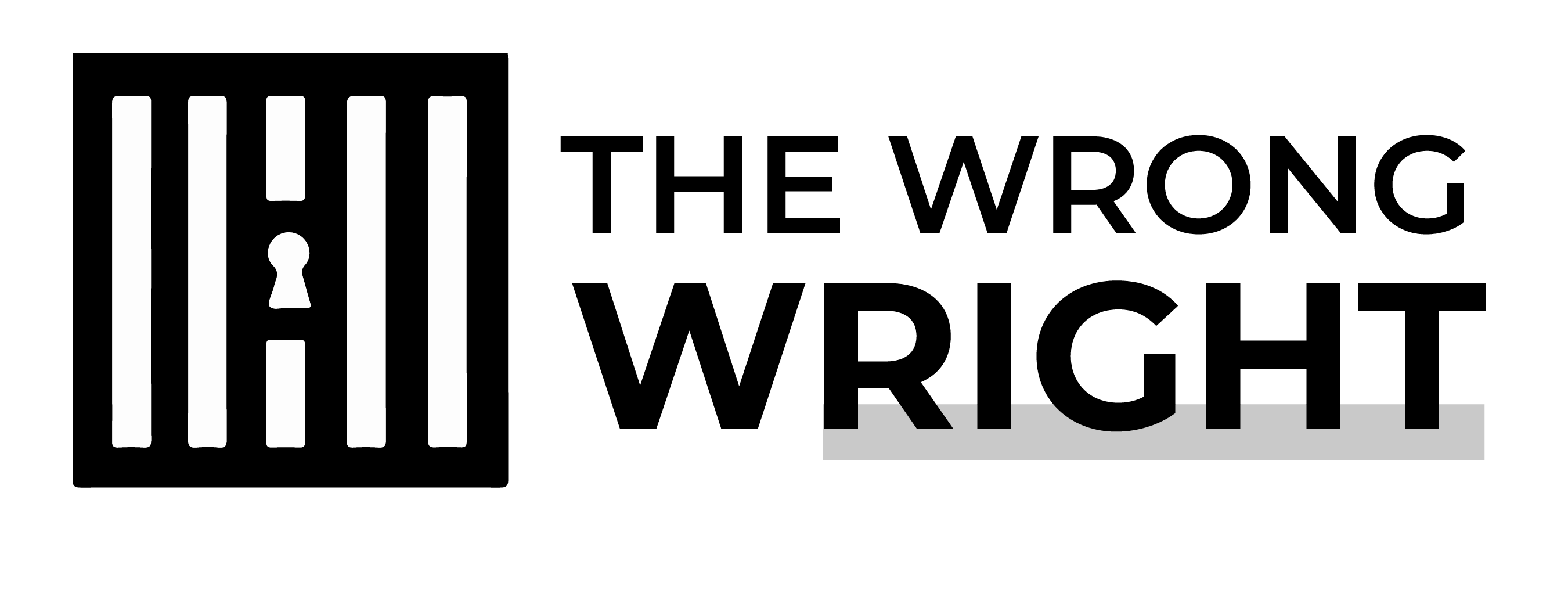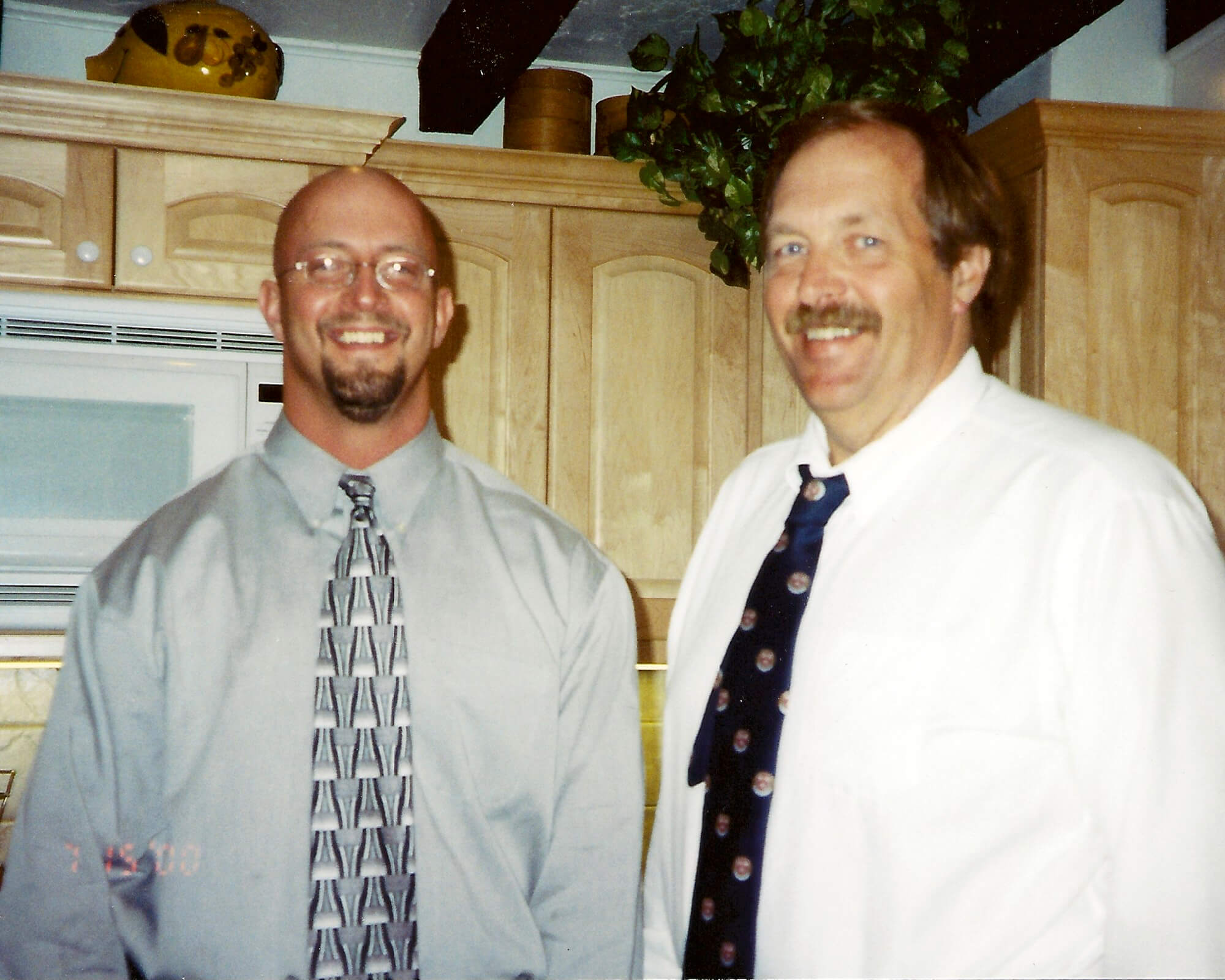CLICK TO LEARN MORE ABOUT CHRIS
Chris Wright was wrongfully convicted for murder and has been in prison since 2008. The really powerful evidence came after the trial and the show. We won't stop fighting until he's freed.
Chris Wright was wrongfully convicted for murder and has been in prison since 2008. The really powerful evidence came after the trial and the show. We won't stop fighting until he's freed.
Murder (2007)
Ken Dolezsar was brutally murdered on Thursday, November 15, 2007 at 7:00 a.m. in front of a crowded Village Inn in Sandy City, Utah.
Investigation & Arrest (2007-2008)
Investigation begins with victim’s wife, who is in federal prison and suspected of hiring Ken’s Killer. Suspects shift but ultimately land on Chris Wright who is arrested on February 28, 2008.
Pre-Trial & Trial (2008-2010)
Chris is held in Jail for 2 years pending trial while his attorney, investigator, and family gather and organize evidence. Hopeful that by following the system, they could set him free.
Appeal & Further Investigation (2011-2018)
Chris files an appeal against his prosecutor for withholding evidence. The appeal doesn’t conclude until 2021 and the investigation continues.
Dateline (2012)
Dateline produces an episode about Chris’s case entitled, “Suspicion“
Murder (2007)
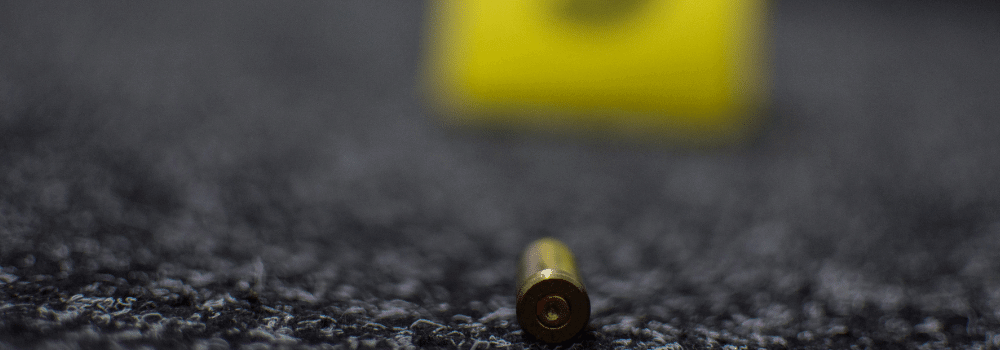
Ken Dolezsar was brutally murdered on Thursday, November 15, 2007 at 7:00 a.m. in front of a crowded Village Inn in Sandy City, Utah.
Learn more about the murder.
Witnesses said that the killer, a muscular man with long hair pulled back in a ponytail, advanced on Ken. As Ken retreated, his hands up in a defensive, placatory manner, he was shot to death. The killer fled in Ken’s white Lincoln Navigator. Chris Wright, who was convicted for the murder, had an alibi: He was asleep with his wife at the time in their downtown condo.
Ken, the evening before his murder, had spoken over the phone with his wife, Leslie DeeAnne Mower Dolezsar, who goes by the name “Dee”, and told her that he had to get up super early the next morning to make a one-hour drive north of their home to Springville, Utah to meet a man whom Ken called, “My friend.” Ken and the man had agreed to meet for breakfast at 7:00 a.m. Dee was excited to hear about the meeting and requested that Ken ask “his friend” a number of questions and report back to her the next day.
Two months before, a neighbor had introduced Chris Wright to Ken as a potential investor in one of Chris’s projects. Chris had three major development projects going on at once. Ken too was invested in at least three major real estate developments, several major construction projects, and building renovations, and was handling his wife’s business matters while she was incarcerated at the Federal Correctional Institution, Dublin (a low-security federal prison for female inmates in Dublin, California). It bears mention that Dee was worth hundreds of millions of dollars and had extensive assets. But, as a federal prisoner, she wasn’t allowed to conduct business. Ken, therefore, was her right-hand man, which kept him very busy.
Witnesses to the murder said that Ken and his killer arrived at the Village Inn together in Ken’s white Lincoln Navigator shortly before 7:00 a.m. They got out of the car and opened all the doors as if searching for something. They began to argue. The killer, a muscular man with long hair pulled back in a ponytail, advanced on Ken. Ken retreated, his hands up defensively. The men stopped in front of a car with a driver in it: Lee Carlson. Lee, hands on his steering wheel, watched in terror as the scene unfolded.
Suddenly, the killer, who towered over Ken, pulled a gun from his waistband and started shooting. Ken staggered backwards and fell face-up in the restaurant’s planter strip right in front of the windows on the buiding’s easy side. The killer came up and shot Ken point-blank in the face, the gun’s barrel so close that the blast stippled Ken’s cheeks with gunpowder.
The killer, who multiple witnesses said wasn’t wearing gloves, ran back to the Navigator, closed all the doors, jumped in, and sped off to the east.
When Chris and Bianca got up for the day, still woozy from a nightlong bout of food poisoning, they read the news about Ken’s death. Although they were shocked by it, neither of them had even the slightest inkling that before long, Chris would be caught up in the investigation.
Meet Bianca, who has stood by her husband Chris since his wrongful persecution in 2008.
Investigation & Arrest
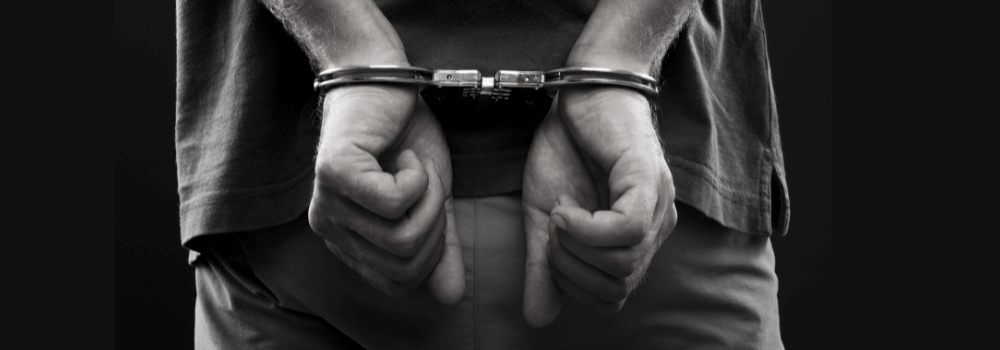
The detectives and police arrived within minutes of the murder. Their investigation begins with Ken's wife, who is in federal prison at the time for tax fraud, and home they believed hired Ken's Killer. Investigations then shift to Dee's hired consultant, but ultimately land on Chris Wright, who was arrested on February 28, 2008, just one month after his first anniversary.
Learn more about the investigation and arrest.
The investigators arrived within minutes of the murder. They interviewed witnesses, including Lee Carlson (the driver who’d had a windshield view of the brutal slaying). Within an hour or so, investigators found Ken’s Navigator, abandoned, appropriately enough, in a local cemetery.
Their working theory: whoever last drove the Navigator was the murderer. So they swabbed the steering wheel, gear shift, the driver seat, and a number of other locations in the Navigator for DNA. They also lifted a number of fingerprints from the driver’s side door. All investigators needed now was a match, and the murder would be solved.
Investigators recovered five bullet shells from the crime scene (Ken was shot five times). Additionally, they found a cell phone in Ken’s pants pocket. The most recent call on it was from earlier in the morning, at approximately 6:30 a.m.; investigators also found a voicemail from the same number associated with the 6:30 a.m. call; the voicemail was time-stamped at approximately 9:00 a.m. on the day before the murder and was from someone named, “Robert.” Investigators fairly quickly found the AT&T store where “Robert’s” phone had been purchased. And there they also found surveillance video of the man who’d bought it: a large, overly muscled man, bald, and vaguely thuggish looking.
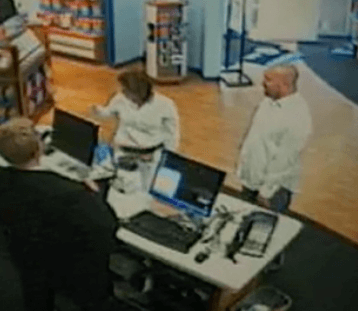
The main witness to the murder was a man named Lee Carlson. He’d arrived at roughly the same time as the killer and Ken to meet a man for a job interview. It was an unusually early time and place, but Lee was willing to sacrifice some sleep for a good opportunity. From the start, Lee claimed that the killer wore an obvious wig, that it was perched on his head like a coonskin cap. No other witness gave this description.
Oddly, when detectives asked Ken’s wife, Dee Mower Dolezsar, a wealthy businesswoman worth hundreds of millions of dollars, whether her husband had said anything about his early morning meeting — a highly unusual meeting time for him, given that he was definitely not a morning person — she said no, absolutely. not, he hadn’t said anything at all.
Dee was a federal prisoner at the time, serving out a sentence for tax fraud (let’s call it what it was: money laundering) involving millions of dollars of unreported income. As a federal prisoner, all her phone calls were recorded. Prison staff knew from these recordings that Dee was lying about not knowing anything about the early morning meeting where her husband was murdered. Prison staff alerted detectives who set up a second interview with Dee: December 13, 2007, exactly four weeks to the day of Ken’s murder: a Thursday.
Dee was the detectives’ first real Person of Interest in Ken’s murder. Present at the December interview were Dean Carriger, lead detective for Sandy City Police Department, Chris Thomas, another Sandy City detective, Dan Patrick, FBI, and Bart Bailey, Dee’s personal attorney. And of course: Dee. The investigators almost certainly intended to charge Dee with Ken’s murder — at one point, even reading her her Miranda rights — but she wriggled free. Investigators came away after a solid three hours with little more than the name of David Novak, the neighbor who’d first introduced Ken Dolezsar and Chris Wright, and whom Dee Mower Dolezsar had hired as a consultant to help prepare her for prison.
When investigators interviewed Novak, they showed him the AT&T surveillance video and asked whether he could identify the burly man. He could and did: “That’s Chris Wright, my neighbor.”
Detectives interviewed Chris for the first time on January 09, 2008, a Wednesday. They also fingerprinted him and swabbed his cheek for DNA. Chris freely admitted to purchasing the AT&T phone but said he’d done so at Ken Dolezsar’s request and later given it to him, by way of David Novak, a few days before the murder. Chris also mentioned having driven Ken’s Navigator about a month before the murder, with Ken as a passenger, up to tour Chris’s Park City development, which Ken was planning to invest in, and, on the return trip, to having been driven and dropped off at home by Ken.
One and a half months later, on February 28, 2008, Chris was arrested in a Circuit City parking lot for Ken Dolezsar’s murder.
Chris and Bianca had just celebrated their one-year anniversary.
Pre-Trial & Trial (2008-2010)
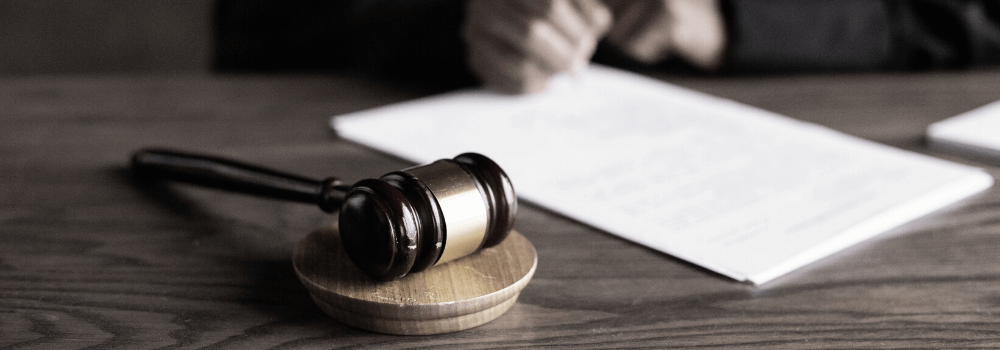
Chris was held in jail for the next two years pending trial. He and his attorney, Ed Brass, aided by his own investigator, Jeff Wright, along with Chris's family, and his new bride, researched, investigated, and organized evidence. Chris hadn't committed the crime, and they all believed that by following the system, they could establish his innocence and set him free.
Learn more about the pre-trial and trial.
Chris’s prosecutor had a different directive. His name is Riley Josh Player. He goes by Josh. He and his investigators did in fact find evidence of Chris’s innocence, but they didn’t tell him or his attorney about it, even though they should have. A prosecutor is obligated by the United States Constitution to turn over all evidence that establishes a defendant’s innocence. This is key because, in criminal cases, you can’t withhold information (whereas in civil cases, you can). The defendant is totally dependent on what the prosecutor chooses to send.
Obviously, this process is subject to abuse. A prosecutor’s failure to disclose exculpatory information is termed a Brady Violation. Any evidence that a prosecutor finds in relation to a defendant’s case, the good as well as the bad, is called “discovery.” Josh, Chris’s prosecutor (or persecutor, as he’d become to him) claimed to have sent Chris’s team all the discovery he had.
Not true.
There were large gaps in discovery that Chris didn’t discover until after his conviction.
On April 30, 2010, Walpurgnis Night in Europe, Chris was convicted of first degree murder and aggravated robbery (because the murderer drove away from the crime scene in Ken’s white Lincoln Navigator). Chris was sentenced to life in prison, no possibility for parole until 2030, which was the harshest penalty that the judge could levy. He did this, he said, because Chris never apologized for the crime.
As Chris said at his sentencing hearing, Ken Dolezsar’s death was a tragedy, and he, Chris, ached for his loved ones. They lost more than he could ever imagine.
But, he asked the judge and everyone present in the room, would you apologize for committing a murder you didn’t commit?
Appeal & Further Investigation (2011-2018)

After the conviction, Chris filed an appeal alleging ineffectiveness of counsel. Prosecutor Player had withheld quite a bit of exculpatory evidence, and Ed Brass, Chris’s trial attorney, had completely mishandled the DNA evidence, botched the cross-examinations, and fell flat on his face in his close. In fact, so badly mishandled the DNA evidence, which is wholly exculpatory, that it ended up counting against Chris.
Learn more about the appeal and further investigation.
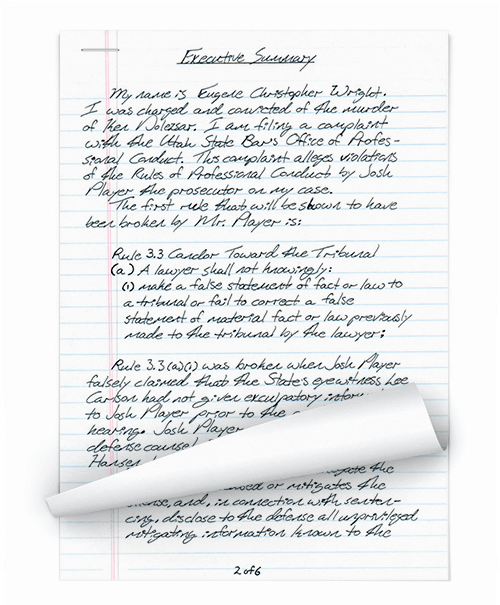
Chris filed his appeal, written entirely by hand and with no access to a law library. His loved ones and friends helped him analyze the discovery materials that his counsel had provided.
No one could believe what Chris uncovered: Prosecutor Player had withheld quite a bit of exculpatory evidence (evidence that proved his innocence). Ed Brass, Chris’s trial attorney had completely mishandled the DNA evidence, botched the cross-examinations, and fell flat on his face in his close. In fact, the DNA was so badly mishandled that instead of proving his innocence, it was counted against Chris.
The DNA evidence was taken from the steering wheel and driver seat. It identified a profile separate from Ken Dolzsar’s and fully excluded Chris. That’s right: the DNA evidence fully excluded Chris as the last driver of the Navigator. In fact, only the one partial, highly degraded sample taken from the armrest (recall: Chris had driven Ken’s Navigator up to Park City about two weeks before the murder) gave a probability of its being matched to Chris as 1 in 546.
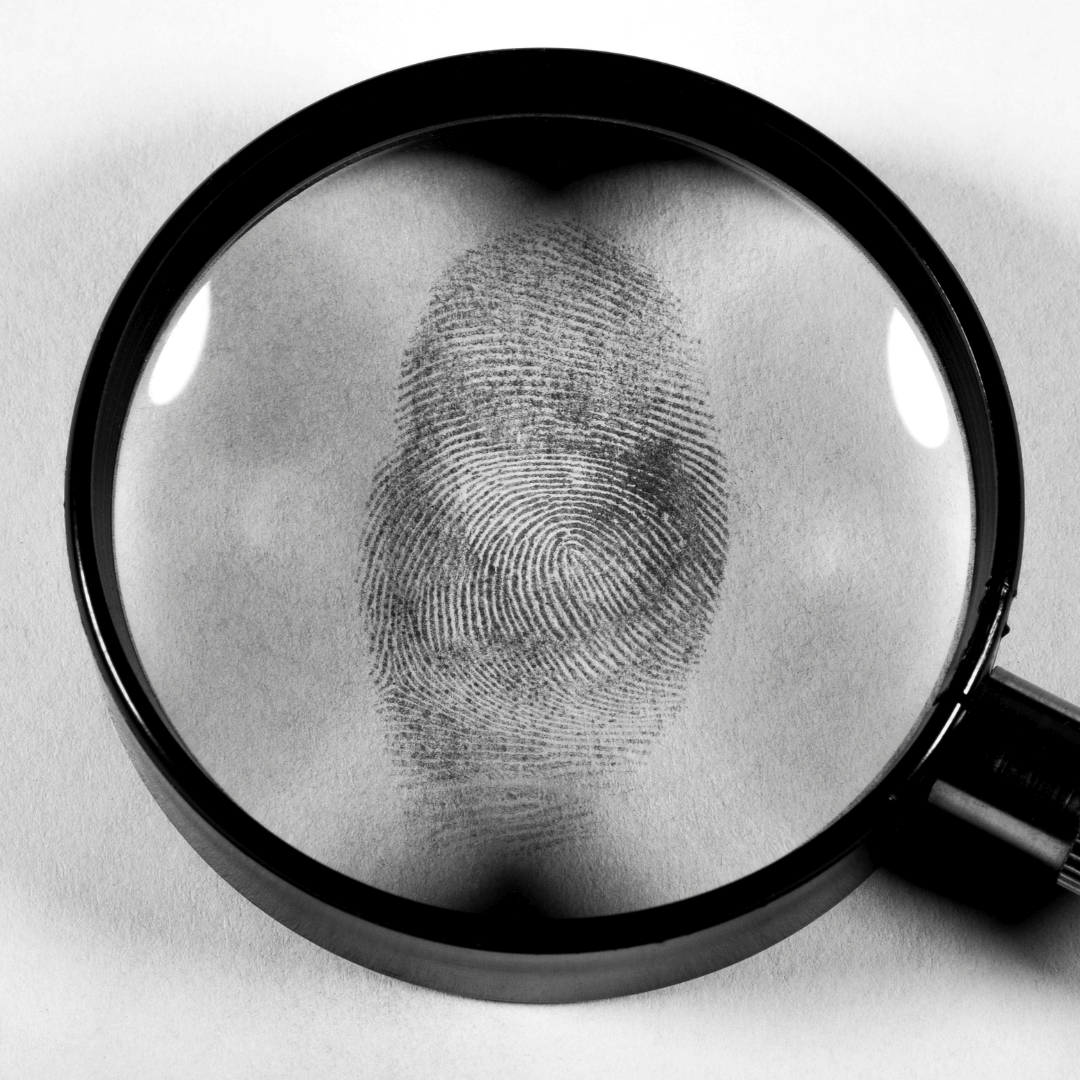
It’s important to note here that this doesn’t mean that there was a 1 in 546 chance of the sample belonging to Chris. In fact, that statistic meant that the partial, highly degraded sample matched 1 in EVERY 546 suspect samples. In contrast, the probability statistic of 1 in 350,000 is considered the very lowest threshold for the beginnings of DNA identification.
Ed Brass, Chris’s attorney, didn’t even counter or bother to explain the “1 in 546” probability statistic. Instead, he began the DNA portion of his closing statement by disqualifying himself from arguing DNA effectively.
“DNA, you know. I’m a lawyer. I’m not a scientist. I’m not going to do this justice.”
But Chris discovered even more evidence pointing to his innocence: DNA and fingerprints collected from Ken Dolezsar’s vehicle. The murderer, who multiple witnesses said was not wearing gloves (recall that Ken was shot in front of a crowded Village Inn), drove away from the crime scene in Ken’s white Lincoln Navigator. The prosecutor’s theory was that whoever drove that vehicle last was the killer. Investigators established a valid DNA profile from the steering wheel and driver’s seta and lifted fingerprints from the car doors. An expert verified that it wasn’t a match; in other words, Chris was fully excluded.
To put it very clearly, he was not the last person to drive Ken’s Navigator, which meant that he was not the killer.
The killer, or someone connected to the killer, also left a voicemail on Ken’s phone the day before the murder. The prosecutor alleged that Chris was that caller. But the voice on the phone didn’t sound anything like Chris’s, and he had an expert validate this in 2012. Unfortunately, none of this evidence made a difference in Chris’s appeal, which dragged on and on.
Most appeals are filed and ruled on in one or two years after a trial. Chris’s lasted until April of 2021 – eleven full years. No one we know has ever heard of an appeal taking that long. It was almost as if certain principalities wanted Chris to stay exactly where he was.
With Chris’s appeal going nowhere, he paid thousands of dollars to a private detective for his own investigation, lasting well into 2016. He tried every possible way to get access to those two terabytes of computer data from Ken’s computers.
The computers would presumably contain Ken’s communications up to the day before his murder, as well as evidence of payments to legal specialists and investigators whom Ken hired to get Dee Mower Dolezsar out of prison; for examples James Bruton III, who was a former Department of Justice appellate trial attorney in the tax division and who is now a private-practice defense attorney who specializes in fighting the DOJ.
The investigator also found a transcript of Dee’s prison phone calls in the days immediately following Ken’s murder. In one frantic call to her attorney, Bart Bailey, Dee demanded that he stop the police from seizing Ken’s computers. But Bart couldn’t stop the police because, as he put it, “they’re trying to catch a murderer.”
Not to read too much into it, but what an interesting choice of article: “…a murderer” — not the murderer.
Let’s return to the one hour and forty-seven minute video of the May 20, 2008 interview at the Sandy City police station with lead detective Dean Carriger and the DA’s investigator, Vaun Delahunty, in which Dee Mower, Bart Bailey (her aforementioned attorney), and Jami Ross (one of her nieces) try fully clear Dee following Chris’s arrest.
In that video’s remaining eleven minutes, Bart Bailey dropped a bombshell of his own:
“Ken got killed, and we just put a stop on all that. Because we couldn’t tell if that was somebody trying to send us a message. But if that was what it was, we got the message. And we just stopped the investigation.”
This was the first Chris had ever heard of Ken’s investigation. Bart further clarified, “But there’s millions of dollars involved here of unreported income. Enough that could have put Tom Mower [Dee Mower’s ex-husband] certainly at concern enough, that could have put her sons Tommy and Darrick at concern — and Ken would have been aware of all this. Because Ken’s the guy that’s paying the attorneys to do the investigation.”
Bart goes on to talk about Jim Brutton, who was the head of the tax division for the US DOJ, and was being paid by Dee Mower for work related to her criminal tax conviction, and for this specific investigation.
With this new information, it became obvious that Josh Player, as the prosecutor, had simply withheld any information about Dee and Ken’s investigation and David Novak and Bart Bailey’s involvement in it. Interestingly, this blocking of computer access and hiding of Ken’s dangerous investigation aligns with Dee Mower’s interests.
If Chris had known about Ken’s dangerous investigation before his trial — i.e., if Josh Player had “played” by the rules — Chris’s whole trial strategy would have been different. He was tied to the murder scene by circumstantial evidence and an eye witness (which is totally unreliable). He was fully excluded from the crime scene by hard physical DNA and fingerprint evidence. It is not Chris’s DNA on the steering wheel, those are not his fingerprints.
The appeal, which was filed in 2011, dragged on until 2021 — a solid eleven years, which is unheard of. While he waited, Chris turned his attention to the prosecutor, Josh Player, who had criminally withheld so much evidence. Chris felt obligated to bring this supposed officer of justice himself to justice. In 2018, Chris filed a bar complaint against Josh Player. It was a bold move, which could cost Chris dearly (and it did), but Chris insisted that it was the right thing to do.
Dateline 2012
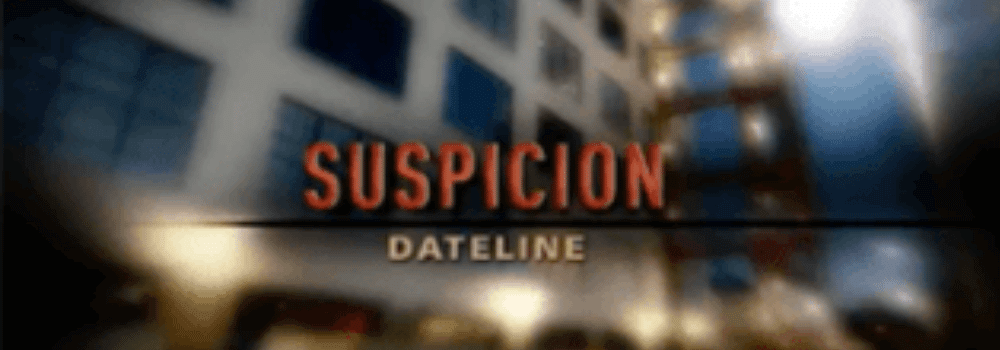
In 2012, Dateline produced an episode about Chris’s case. Some of that exculpatory evidence is mentioned in it. (CTA: Watch the Dateline Episodes for the Full Story > Dateline) Chris’s appellate lawyer was completely against his doing the Dateline episode, but it felt right, so Chris and his family went ahead with it. They got a tremendous response, but Chris’s lawyer remained in his ear about the dangers of going to the media during the appellate process. So Chris reversed course, shut down the public response, and went back to researching evidence for the appeal.
Haven't Seen it Yet? Watch Dateline Episode
Bar Complaint (2018-2021)
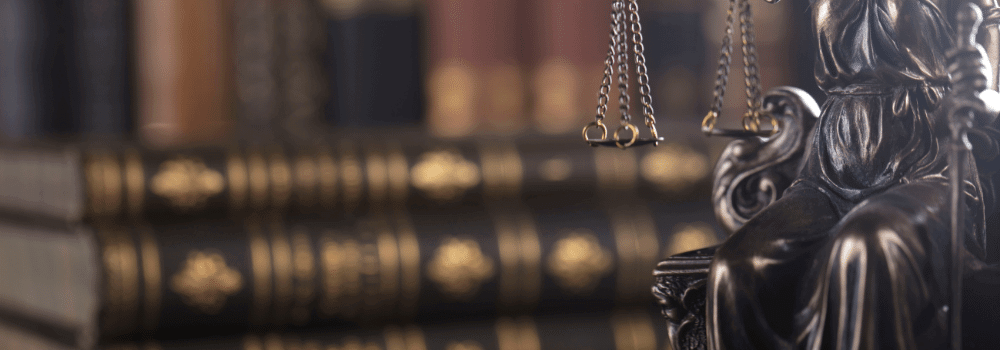
In order to understand Chris’s bar complaint against Josh Player, you first have to understand how evidence is handled differently for defendants in criminal and civil trials. That is to say, in civil trials, a defendant can subpoena information — any and all information. In criminal trials, a defendant is wholly dependent on the prosecutor for any and all evidence. That is to say, a prosecutor is obligated to turn over to the defendant ALL evidence, whether inculpatory or exculpatory. But a prosecutor’s reputation rests wholly on whether he obtains convictions, which means that a prosecutor has an incentive to withhold exculpatory evidence — i.e., evidence that could set a defendant free. Worse, there is little prosecutorial oversight. Which means that this whole process is subject to prosecutorial abuse. And that’s exactly what we have today in our criminal justice system: prosecutors who cherrypick evidence in order to consistently win convictions and who are practically never held to account — a prosecutocracy (as one commentator has termed it).
Josh Player altered recordings of interviews, withheld exculpatory evidence, much of which came to light in the decade after Chris’s conviction. But the most desirable evidence remains hidden to this day: the last 47 minutes of a one-hour forty-seven-minute police interview with Ken Dolezsar’s widow, Dee Mower (the first and most likely suspect in Ken’s murder), her attorney, and her niece. And the content of Ken Dolezsar’s computers — all two terabytes worth. It is our firm belief that these computers hold not only correspondence that will fully exonerate Chris but evidence of a massive money-laundering scheme meant to repatriate hundreds of millions of dollars and that had, at its center and as its linchpin, Ken Dolezsar’s murder. Ken’s brutal murder was carried out publicly in order to send a message to other conspirators (i.e., “we can find you anywhere and kill you”) and to make certain that any damning evidence about the massive money-laundering scheme remained hidden forever.
Dee Mower Lawsuits (2020)

In the fall of 2020, Chris made quite the discovery: Dee Mower had filed, in the years following Ken Dolezsar’s death, over six lawsuits claiming that she’d been defrauded of over $50MM. The last of these lawsuits was settled in 2021. In every one of the lawsuits, Ken Dolezsar was shown to have been the one (or among several people) who defrauded Dee. That’s right: Ken Dolezsar was apparently stealing from Dee before and during her incarceration.
All of which goes to show that Dee Mower had quite the motive to have Ken murdered.
On the other hand, it’s also possible that the lawsuits were part of a larger money-laundering scheme that Ken was the patsy for. Based on what Chris has learned about Ken (from her journals and the testimony of those who knew him), it’s far more likely that Ken was a patsy.
Either way, Ken’s computers — all two terabytes of them, all of them in Sandy City PD’s evidence room — will show once and for all what really happened. It’s time that the world saw what was on those computers
The Innocence Project (2021+)

We have one year to file the Post Conviction Relief Act. The best thing about this is that it grants Chris subpoena power, which means that he’ll finally have a chance to see what’s on Ken Dolezsar’s computers. We need your support. We appreciate anything you choose to donate, and we promise that every penny will go toward Chris’s legal defense.
YOUR SUPPORT, YOUR LOVE AND YOUR VOICE ARE CRITICAL
Want to stay in the loop and see the latest updates on Chris? Check out our blog and subscribe to our email newsletter with the latest news!
Show your support by sending Chris a letter, sharing a testimonial, or donating to help free Chris
